Explaining SMA to your child
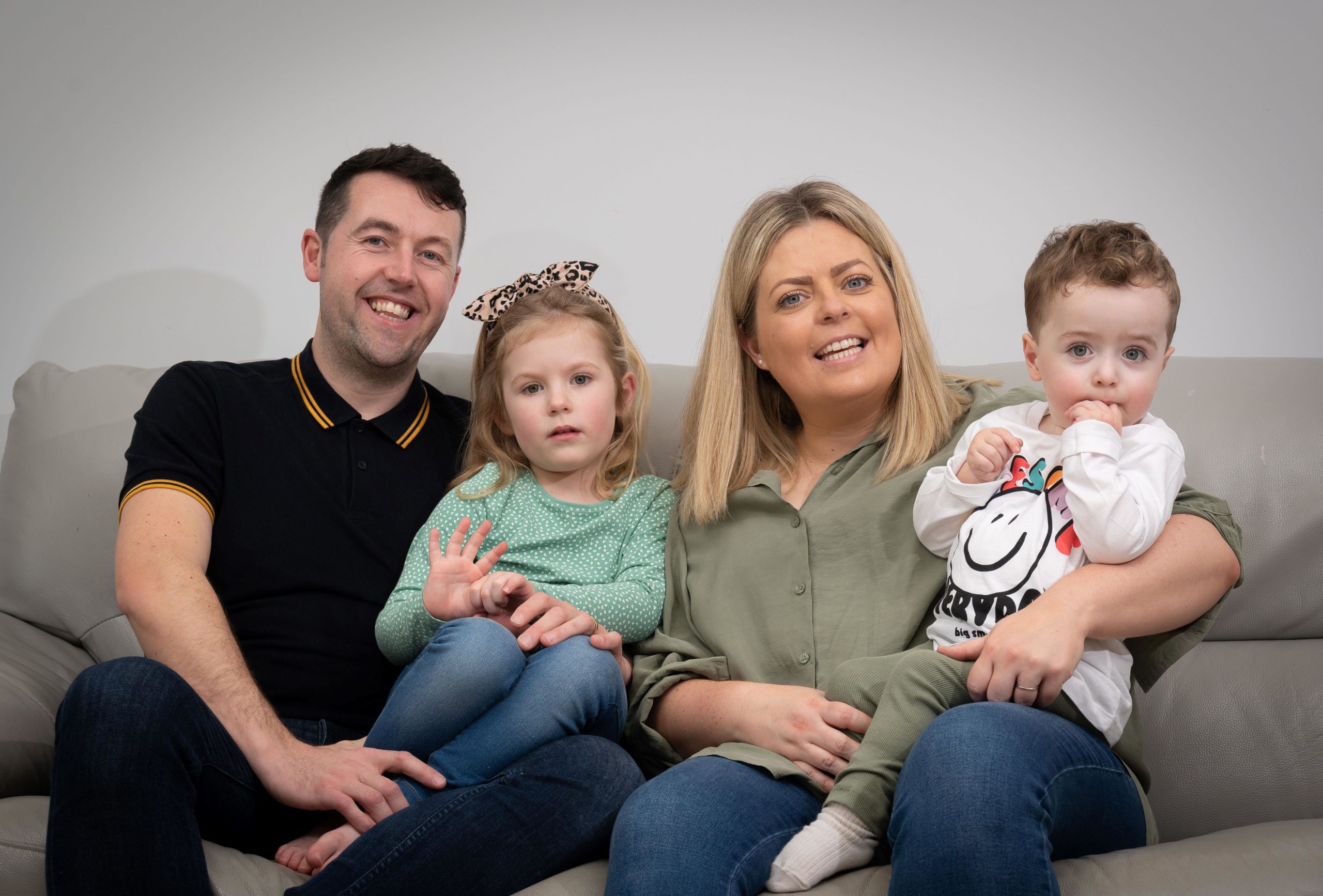
Explaining SMA to your child
Last reviewed: January 2025
Any family affected by SMA and living in the UK, can request a free copy of each of these books:
- Our SMArt World. Written for children age 7 – 11, it is all about SMA and living with the condition. It includes a lot of the information on this page.
- Smasheroo written for younger children.
You can order these and other items through our shop >
This page may be useful If your child is age 7+ and starting to ask:
-
Why do some people have SMA?
-
Why does it affect people differently?
-
How come everyone in my family doesn’t have it?
-
How did you find out I had it?
-
Why do I have to have a drug treatment and extra care?
-
How many other people have SMA?
To answer these questions, you have to first of all know how bodies work and what is going on for someone who has SMA:
Our Bones & Muscles
Everyone’s body is made up of cells – trillions of them. Most cells are so small you would need a microscope to see them. There are all sorts of cells with different jobs. Some are building blocks that make up our bones, our muscles, our hair and skin.
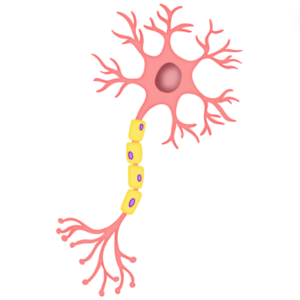 Nerve cells are one sort of cell. They are long and thin and different shapes so that they can carry messages from one part of our body to another. Some nerve cells stretch from inside our spinal cord right down to our big toe!
Nerve cells are one sort of cell. They are long and thin and different shapes so that they can carry messages from one part of our body to another. Some nerve cells stretch from inside our spinal cord right down to our big toe!
The nerve cells you need to know about to understand SMA are our lower motor neurons. They are inside our spinal cord. This is protected by our backbone.
Our brain sends instructions to our muscles so that they can move and move our bones. It does this by sending electrical messages through our nerve cells.
Our lower motor neurons pick up the messages that come from our brain and down our spinal cord. From there, our lower motor neurons take the messages to our muscles and tell them to move.
Everyone who has SMA has lower motor neurons in their spine that don’t carry messages very well. Some of those lower motor neurons have stopped working. Which ones and how good they are at carrying messages is different for each person. You can probably see now why the condition is called spinal muscular atrophy.
You are probably now thinking, but why don’t those lower motor neurons work well? To answer this you need to know about our genes….
Inside every cell there are thousands of genes – these are very important. They control lots of the instructions about us and how our bodies are put together – a bit like a cake recipe. They control things like the colour of our eyes and our hair.
When one of our genes does not work properly, this is sometimes called an ‘altered’ gene. Having an ‘altered’ gene is a bit like having a cake recipe with part of the instructions missing.
Lots of people have ‘altered’ genes of one sort or another – for example, people who are colour blind.
The important genes you need to know about to understand SMA are:
-
The SMN1 gene
The full name of this gene is Survival Motor Neuron 1.
Everyone has two of these SMN1 genes in all the cells in their body. They were passed to them by their parents.
Half our genes come from our mum, half from our dad. The exact set of genes that mums and dads pass on to their children is different each time. This is why brothers and sisters are different from each other.
Both the SMN1 genes are altered for people who have SMA.
Both the SMN1 genes are healthy and not altered in people who do not have SMA
-
The SMN2 gene
The full name of this gene is Survival Motor Neuron 2.
Unlike most genes, the number of copies of SMN2 on each chromosome can vary from one person to the next. There can be between 0 – 8 copies.
So, what do these genes do?…..
As well as controlling lots of instructions about us, genes also carry information that is needed to make proteins.
Proteins are even smaller than cells and have different jobs to do, like fighting off infections and building muscles.
Our SMN1 genes make an important protein called: the Survival Motor Neuron Protein or SMN Protein for short.
We need SMN protein to keep our lower motor neurons healthy and working so that they can tell our muscles to move. Lower motor neurons pick up the messages that have come from our brain, all the way down to our spinal cord.
Our SMN2 genes are like the SMN1 gene but they can only make a small amount of protein that works. Remember, they are also a bit different in another way? We can have between 0 and 8 copies of them. The more copies we have, the more SMN protein we are likely to be able to make. These genes are sometimes called ‘back-up’ genes.
Our SMN1 and SMN2 genes work together to make SMN protein.
Remember that people have different numbers of copies of SMN2 genes?
Someone who has SMA and has 4 or 5 SMN2 copies is likely to be able to make more SMN protein than someone who only has a 2 or 3 copies.
That’s one reason why some people ‘s leg and arm muscles aren’t affected as much.
It is also one reason why someone who has more SMN2 copies is less likely to have difficulties with their breathing and swallowing muscles.
Remember that everyone has two SMN1 genes in all the cells in their body? These are passed on to them by their parents – one from their mum, one from their dad.
Dads pass on their genes through their sperm. Mums pass on their genes through their eggs. When a sperm and egg join up in the mum’s womb, they form an embryo which grows into a foetus and then a baby.
If the mum and dad are carriers of SMA:
- A carrier of SMA has one ‘healthy’ SMN1 gene and one ‘altered’ SMN1 gene.
- Parents cannot control what genes they pass on. It is like rolling a dice.
- For each pregnancy, there is a 1 in 4 (25%) chance that the baby will have SMA
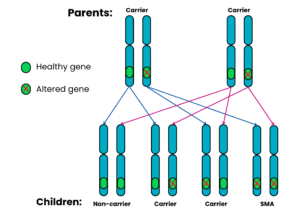
Not many people know they are carriers of SMA. They don’t usually find out until they have a child who is diagnosed with SMA.
Because of the way those dice roll, a child born with SMA may be the first child or the second, third or fourth in the family. Most parents do not find out they are carriers until then.
If the mum or dad has SMA themselves, the dice roll a bit differently.
Working out that someone has got SMA is a bit like solving a mystery or puzzle – doctors know what clues to look for.
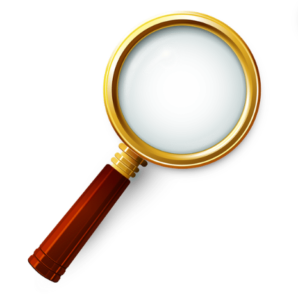 One of the first clues was probably when your mum and dad noticed your muscles were not as strong as usual for your age. They would have asked the doctors if they knew why.
One of the first clues was probably when your mum and dad noticed your muscles were not as strong as usual for your age. They would have asked the doctors if they knew why.
The doctors would have done some tests to see what was happening.
One of these would have been a blood test. They would have used a very strong microscope to look at your genes.
They would have seen that two of your SMN1 genes were altered.
They would have looked at your SMN2 genes and counted how many you had.
They would have put this information together with what your mum and dad had noticed about you. They would have been able to say:
What Type of 5q SMA they thought you have:
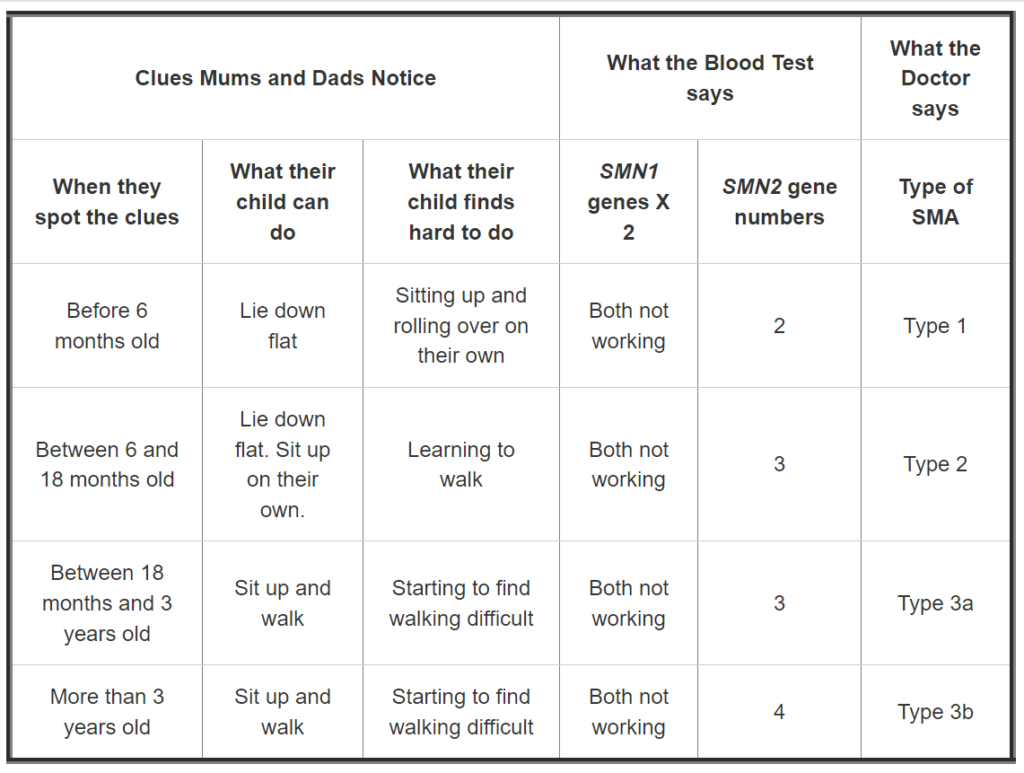
This was not the end of the puzzle though.
The doctors still could not be sure what would happen with your SMA. This is because everyone with SMA is different and as children grow things may change.
Doctors can give children a drug treatment that helps make up for the SMA protein that their SMN2 genes cannot make.
A drug treatment can help to keep lower motor neurons healthy and working so that they can tell muscles to move. A drug treatment cannot do this for all lower motor neurons. It cannot cure or get rid of SMA completely.
There are three different treatments for SMA. They work in two different ways:
Boosting the SMN2 gene
Two of the treatments do this. They have to be taken throughout a person’s life.
- Nusinersen is also called Spinraza. It is given one every four months as an injection into the spine.
- Risdiplam is also called Evrisdi. It is taken every day as a liquid.
Replacing the missing SMN1 gene
- Zolgensma is given once as an injection. It is usually only given to babies or very young children
There are also other ways to manage SMA. Some children have:
- physiotherapy to help them with their movement
- equipment like a wheelchair to help them get around
- equipment to help them with their breathing, sleeping and eating
SMA is a rare condition.
Nobody knows exactly how many people have SMA, but in the whole world, approximately 1 person in every 10,000 are born with SMA each year.
To make this easier to picture, think about the huge crowds of people that go to the Glastonbury music festival or to Wembley Stadium for football matches:
- 200,000 people went to Glastonbury in 2024, so about 20 of them could have been born with SMA.
- 90,000 people can fit in Wembley Stadium, so that means about 9 of them could have been born with SMA.
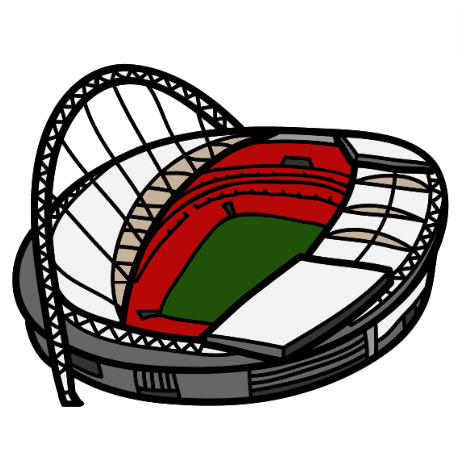

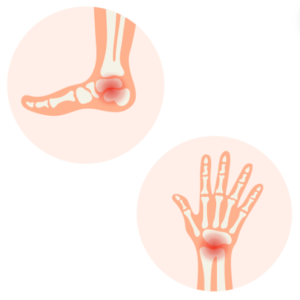 Inside us we all have a skeleton. It supports and protects our body. It is made of bones that grow as we grow.
Inside us we all have a skeleton. It supports and protects our body. It is made of bones that grow as we grow.